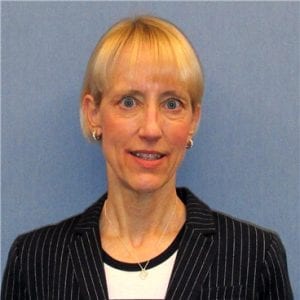 Since last summer, the Operational Excellence website has been featuring a series of staff spotlights: stories about staff members who’ve taken on new leadership roles since the implementation of OE2C and are helping bring more innovation and efficiency to campus operations. Read more SMU staff spotlights
Since last summer, the Operational Excellence website has been featuring a series of staff spotlights: stories about staff members who’ve taken on new leadership roles since the implementation of OE2C and are helping bring more innovation and efficiency to campus operations. Read more SMU staff spotlights
Tracy Horstman, SMU’s Director of Space Management, loves putting the right and left sides of her brain into action. “Space to me is a giant puzzle that requires both data-driven and creative processes in order to provide thoughtful solutions,” she said. “I like working with folks to come up with options that fit their needs.”
After earning a B.A. in interior design from the University of Iowa and an M.B.A. from the University of Kansas, Horstman spent the first part of her career in real estate development, notably design and construction management. “Before coming to SMU in January 2017, I spent 13 years working at a public research university in the areas of space planning and programming, space management, and master planning,” said Horstman.
Horstman came to SMU for a position created out of the work of the Operational Excellence Facilities Initiative. Her responsibilities include:
- Space data organization, accounting, analysis, and reporting;
- Evaluating technical and visual plan data for space efficiencies, allocation, and modification;
- Planning for short-term and long-term space needs in accordance with the University’s strategic initiatives; and
- Assisting with the programming and space planning of new facilities, building renovations, and department relocations.
Horstman feels that space management at any institution is a sensitive subject and can be challenging. “Space must be effectively and efficiently managed as it is a valuable and potentially finite resource, critical to SMU’s mission and financial stability,” she said. “Universities have had to implement processes to better utilize space simply because buildings are expensive to construct and maintain.”
In her short time at SMU, she is proud of the work she has done in the University’s space database, redefining more than 15,000 rooms per higher education guidelines. Her work has provided a solid foundation from which to forecast and plan. “After all, how do we know what we need if we don’t know what we have?” she asks.
Horstman’s goals for the future are ambitious and exciting for the University. “We are currently researching software options that will provide a bi-directional connection between our existing building plans and space database,” she said. “Not only will this provide accurate and consistent space data, but we will be able to visually gather all kinds of facilities data essential for planning and reporting purposes. This allows us to be much more nimble and proactive so we can provide top-notch services to our campus customers.”
Horstman is also working with the University Space Task Force, a temporary work group that will finish in the summer. Their charge is to work toward a recommended governance structure for University space, including roles and responsibilities, in addition to defined utilization standards for office, teaching, and research space.
“My goal is to build a robust and supportive space management program for SMU,” she says. “So far, we are doing all the right things to accomplish just that.”
